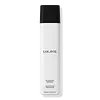What's inside
What's inside
 Key Ingredients
Key Ingredients

No key ingredients
 Benefits
Benefits

 Concerns
Concerns

 Ingredients Side-by-side
Ingredients Side-by-side

Lactobacillus/Arundinaria Gigantea Ferment Filtrate
Skin ConditioningSodium Lauroyl Methyl Isethionate
CleansingLactobacillus Ferment
Skin ConditioningCocamidopropyl Betaine
CleansingGlycerin
HumectantSodium Cocoyl Isethionate
CleansingSodium Lauroyl Sarcosinate
CleansingSalvia Hispanica Seed Extract
EmollientCitric Acid
BufferingGlycosphingolipids
EmollientPisum Sativum Peptide
Skin ConditioningCitrus Limon Fruit Extract
MaskingMentha Piperita Leaf Extract
Skin ConditioningSaccharum Officinarum Extract
MoisturisingZingiber Officinale Root Extract
MaskingNiacinamide
SmoothingPanthenol
Skin ConditioningSaccharomyces/Copper Ferment
Skin ConditioningSaccharomyces/Iron Ferment
Skin ConditioningSaccharomyces/Magnesium Ferment
Saccharomyces/Zinc Ferment
Skin ConditioningPyrus Malus Fruit Extract
Skin ConditioningBiotin
AntiseborrhoeicCaffeine
Skin ConditioningMelatonin
AntioxidantCamellia Sinensis Leaf Extract
AntimicrobialHexapeptide-11
Skin ConditioningPolyquaternium-10
Betaine
HumectantParfum
MaskingLinalool
PerfumingLimonene
PerfumingLactobacillus/Arundinaria Gigantea Ferment Filtrate, Sodium Lauroyl Methyl Isethionate, Lactobacillus Ferment, Cocamidopropyl Betaine, Glycerin, Sodium Cocoyl Isethionate, Sodium Lauroyl Sarcosinate, Salvia Hispanica Seed Extract, Citric Acid, Glycosphingolipids, Pisum Sativum Peptide, Citrus Limon Fruit Extract, Mentha Piperita Leaf Extract, Saccharum Officinarum Extract, Zingiber Officinale Root Extract, Niacinamide, Panthenol, Saccharomyces/Copper Ferment, Saccharomyces/Iron Ferment, Saccharomyces/Magnesium Ferment, Saccharomyces/Zinc Ferment, Pyrus Malus Fruit Extract, Biotin, Caffeine, Melatonin, Camellia Sinensis Leaf Extract, Hexapeptide-11, Polyquaternium-10, Betaine, Parfum, Linalool, Limonene
Water
Skin ConditioningAloe Barbadensis Leaf Juice
Skin ConditioningCocamidopropyl Hydroxysultaine
CleansingSodium Laurylglucosides Hydroxypropylsulfonate
CleansingDisodium Cocoyl Glutamate
CleansingSodium Chloride
MaskingSodium Cocoyl Isethionate
CleansingCalendula Officinalis Flower Extract
MaskingChamomilla Recutita Flower Extract
MaskingCocos Nucifera Fruit Extract
EmollientGlycerin
HumectantCaprylyl Glycol
EmollientPanthenol
Skin ConditioningGuar Hydroxypropyltrimonium Chloride
Skin ConditioningCaprylhydroxamic Acid
Trisodium Ethylenediamine Disuccinate
Sodium Benzoate
MaskingSodium PCA
HumectantCoconut Acid
CleansingGlutamic Acid
HumectantCitric Acid
BufferingWater, Aloe Barbadensis Leaf Juice, Cocamidopropyl Hydroxysultaine, Sodium Laurylglucosides Hydroxypropylsulfonate, Disodium Cocoyl Glutamate, Sodium Chloride, Sodium Cocoyl Isethionate, Calendula Officinalis Flower Extract, Chamomilla Recutita Flower Extract, Cocos Nucifera Fruit Extract, Glycerin, Caprylyl Glycol, Panthenol, Guar Hydroxypropyltrimonium Chloride, Caprylhydroxamic Acid, Trisodium Ethylenediamine Disuccinate, Sodium Benzoate, Sodium PCA, Coconut Acid, Glutamic Acid, Citric Acid
Ingredients Explained
These ingredients are found in both products.
Ingredients higher up in an ingredient list are typically present in a larger amount.
Citric Acid is an alpha hydroxy acid (AHA) naturally found in citrus fruits like oranges, lemons, and limes.
Like other AHAs, citric acid can exfoliate skin by breaking down the bonds that hold dead skin cells together. This helps reveal smoother and brighter skin underneath.
However, this exfoliating effect only happens at high concentrations (20%) which can be hard to find in cosmetic products.
Due to this, citric acid is usually included in small amounts as a pH adjuster. This helps keep products slightly more acidic and compatible with skin's natural pH.
In skincare formulas, citric acid can:
While it can provide some skin benefits, research shows lactic acid and glycolic acid are generally more effective and less irritating exfoliants.
Most citric acid used in skincare today is made by fermenting sugars (usually from molasses). This synthetic version is identical to the natural citrus form but easier to stabilize and use in formulations.
Read more about some other popular AHA's here:
Learn more about Citric AcidGlycerin is already naturally found in your skin. It helps moisturize and protect your skin.
A study from 2016 found glycerin to be more effective as a humectant than AHAs and hyaluronic acid.
As a humectant, it helps the skin stay hydrated by pulling moisture to your skin. The low molecular weight of glycerin allows it to pull moisture into the deeper layers of your skin.
Hydrated skin improves your skin barrier; Your skin barrier helps protect against irritants and bacteria.
Glycerin has also been found to have antimicrobial and antiviral properties. Due to these properties, glycerin is often used in wound and burn treatments.
In cosmetics, glycerin is usually derived from plants such as soybean or palm. However, it can also be sourced from animals, such as tallow or animal fat.
This ingredient is organic, colorless, odorless, and non-toxic.
Glycerin is the name for this ingredient in American English. British English uses Glycerol/Glycerine.
Learn more about GlycerinPanthenol is a common ingredient that helps hydrate and soothe the skin. It is found naturally in our skin and hair.
There are two forms of panthenol: D and L.
D-panthenol is also known as dexpanthenol. Most cosmetics use dexpanthenol or a mixture of D and L-panthenol.
Panthenol is famous due to its ability to go deeper into the skin's layers. Using this ingredient has numerous pros (and no cons):
Like hyaluronic acid, panthenol is a humectant. Humectants are able to bind and hold large amounts of water to keep skin hydrated.
This ingredient works well for wound healing. It works by increasing tissue in the wound and helps close open wounds.
Once oxidized, panthenol converts to pantothenic acid. Panthothenic acid is found in all living cells.
This ingredient is also referred to as pro-vitamin B5.
Learn more about PanthenolSodium cocoyl isethionate is a natural ingredient from coconut oil. It is an ultra gentle cleanser that gives a nice foam without drying the skin or impacting the skin barrier.
The amount of foam created depends on the amount of sodium cocoyl isethionate used in the product.
This ingredient also helps improve the spreadability of a product.
Learn more about Sodium Cocoyl Isethionate